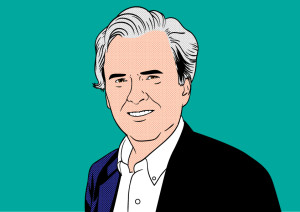Is Apple Pay Popularity Slipping?
By Robert McGarvey
For CU2.0
Have far can Apple Pay usage drop before emergency sirens sound?
That’s the question I have as I look at new usage numbers via fraud prevention firm Kount which today released the 6th edition of its Mobile Payments and Fraud Survey: 2018 Report, compiled in association with Braintree and the Fraud Practice. Chew on the numbers: “In surveying nearly 600 merchants, the report found that several major mobile wallets have lost traction, with the percentage of respondents accepting Apple Pay in 2018 down from 48 to 35 percent, the most drastic decline of all mobile wallets, and Google Pay down from 38 to 25 percent.”
Understand, this pertains to a mix of multi-channel merchants and pure play ecommerce merchants. At physical, in-person points of sale, Apple Pay has faced challenges – see this blog from a few months ago – but it’s not the catastrophe the Kount numbers depict. At in-person retail what seems to be occurring is that Apple Pay adoption has gone stagnant, without many new consumers climbing on. That makes perfect sense. Those who wanted it long ago bought an iPhone – or a Samsung phone or other, high-end Android and got into mobile payments with Google Pay or Samsung Pay. There is no wave of pent up demand waiting to get the technology. So there is no year on year jump and it’s hard to see how there would be.
Nonetheless, Apple Pay – clearly – is the dominant mobile wallet in in-person retail. No one disputes that.
And I have no evidence of a mass flight of merchants from Apple Pay in in-store retail.
Usage of Apple Pay, Google Pay, etc. at online and multi-channel merchants is a very different matter however. They apparently are finding the going has gotten tougher.
The Kount research shows the clear leader in the field is – no surprise – PayPal which had grown from 48% to 64% of surveyed merchants.
To me that’s no surprise because I use PayPal probably weekly, usually to pay at online merchants I have no particular intent to visit often and I also have no desire for them to hold my credentials. I paid for a Headspace app annual subscription yesterday with PayPal. And note: those PayPal transactions pull money from an account I have at a credit union.
There’s a key point. A credit union can look at the battle for payments at online sites and honestly stay indifferent. It can win whether it is PayPal or Apple Pay or whatever that claims the transaction. The key is to persuade the consumer to name your card as the one behind the transaction. How compelling are you in persuading consumers this matters – to the credit union and therefore also to the member?
Just think beyond Apple Pay because merchants and consumers are. Reported Kount: “The share of merchants who accept Samsung Pay, Visa Checkout, MasterPass and Chase Pay all stayed constant from last year, while AMEX Express Checkout enjoyed the biggest gain in support, growing acceptance from 9% to 16% of merchants.”
As for why some online merchants have withdrawn support for Apple Pay and Google Pay in particular, Don Bush, an executive with Kount, said in an interview that at most merchants there’s a limit to how many logos they want to display on their checkout page. That’s especially true of mobile first merchants. If a particular service isn’t getting used – or if it seems too expensive or if too much fraud is coming through it – the merchant will reassess support and may pull the plug.
“Merchants have to be particular about payment types, depending upon customer adoption,” underlined Bush.
Note too: everybody expects more volume in commerce via the mobile channel. Said Kount: “Nearly one-third of merchants surveyed believe the mobile channel will represent at least half of their total revenue by 2020.”
Kount continued: “60% of merchants say the mobile channel will represent at least 30% of their total revenue by then.”
So the fight for supremacy in mobile payments is a key battle.
And Apple doesn’t look unbeatable.
Bottomline: mobile shopping is on the rise, winners and losers are still emerging, and, as for Apple Pay, it just seems to be losing popularity – and that last has to count as an intriguing factoid.
